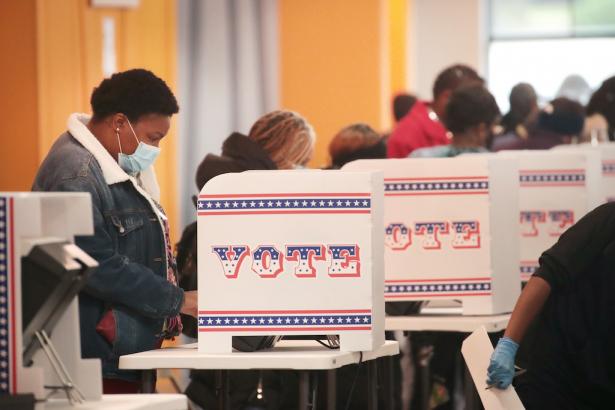Earlier this week, Wisconsin senator Ron Johnson appeared on local radio to declare his “loss of confidence” in the state’s elections commission and assert the need for its legislature to take control of future elections. The context for Johnson’s remarks is important, coming as they do in the wake of a nonpartisan report that found no significant evidence of fraud during the 2020 election — the upshot being that if actual evidence of foul play cannot be found, Republican lawmakers will simply continue to assert that it has occurred as a pretext for continuing to meddle with election rules. Johnson’s intervention also follows a Republican-led push for a partisan redistricting of the state that passed its senate earlier this month.
Taken together, both represent different thrusts in a wider GOP strategy to consolidate power by rewriting election laws and empowering state legislatures to toss out results in future contests. The two efforts are, of course, mutually reinforcing. With greater control of state legislatures, Republicans wield more power to rewrite rules and redraw district boundaries, thus ensuring false majorities that will, in turn, be empowered to act in the GOP’s favor in the event of future disputes in presidential elections — particularly if the results are close.
In the case of Wisconsin, it’s already quite apparent how effective such rigging efforts can be. Whether Johnson’s push ultimately succeeds or not, and whether the latest GOP-led attempt at redistricting eventually finds a way around Democratic governor Tony Evers’s subsequent veto, the state’s gerrymandered boundaries have already rewarded Republicans with 64 percent of the seats in its assembly on only 46 percent of the vote. In many ways, it’s pertinent that such efforts are happening in Wisconsin to begin with. A longtime progressive fortress and onetime bastion of American socialism, the past decade has seen the state transformed into a kind of laboratory for the Right’s wider assault on unions, voting rights, and other pillars of democracy.
Its experience is, of course, by no means an isolated case. Since the 2020 presidential election, Republican legislatures across America have moved to redraw the boundaries of state electoral districts, rewrite election rules, and suppress the votes of traditionally non-Republican constituencies. As of last May, data compiled by the Brennan Center found that legislators in some forty-eight states had introduced legislation with restrictive provisions, while twenty-two of such bills had already been enacted. This is to say nothing of the many GOP-led efforts at redrawing district boundaries, a few more of which have passed through other state legislatures in recent months. A summary compiled by voting rights expert Ari Berman underscores the profoundly antidemocratic character of such efforts:
- In Georgia, Republicans passed a new congressional map on Monday that would give their party 64 percent of US House seats in a state Joe Biden won with 49.5 percent of the vote.
- In Ohio, Republicans passed a new congressional map on November 18 giving their party at least 80 percent of seats in a state Donald Trump won with 53 percent of the vote.
- In North Carolina, Republicans passed a new congressional map on November 4 giving their party between 71 to 78 percent of seats in a state Trump won with 49.9 percent of the vote.
- In Texas, Republicans passed a new congressional map on October 18 giving their party 65 percent of seats in a state Trump won with 52 percent of the vote.
As Berman rightly points out, such gerrymandering may help give the Republican Party a huge advantage in next year’s midterms and allow it to consolidate control in several key state legislatures — effectively turning them red for at least the next decade, even if the GOP secures less than 50 percent of the vote.
For all their rhetoric surrounding Donald Trump, the events of January 6, and the supposedly existential threat facing American democracy, national Democrats have steadfastly refused to do any of the things necessary to counter this onslaught. They’ve apparently ruled out any attempt to ditch the filibuster and visibly have no strategy to pass voting rights legislation ahead of next year’s midterms. Still more remarkably, officials in the Biden White House have insisted to activists that the Democrats intend to “out-organize” voter suppression — as sure a sign as any that even basic self-interest will not be enough to convince the administration to make voting rights a priority while Democrats wield unified control of the federal government.
The picture is, to say the least, pretty bleak. While one of America’s two major political parties is engaged in a concerted effort to rig future elections in its favor, its supposedly reform-minded, liberal alternative consistently refuses to do much more than issue dire rhetorical warnings about the Republican menace while precluding or dismissing the kinds of actions that logically follow from them. Make no mistake: the ultimate goal of the GOP’s strategy is nothing less than the permanent instantiation of conservative minority rule. Thanks to the complacency of America’s most powerful liberals, the realization of that goal may start to look like something more than a pipe dream in the years ahead.
===


Spread the word